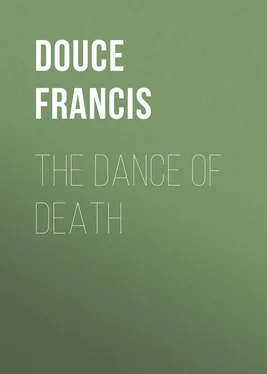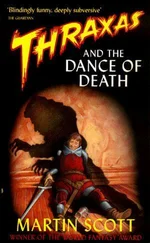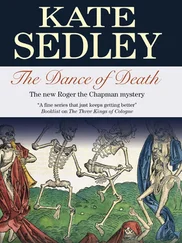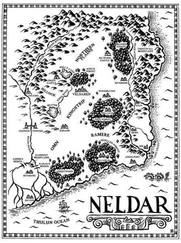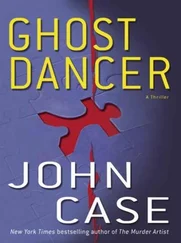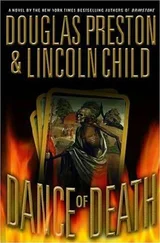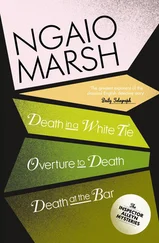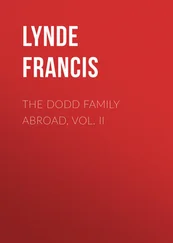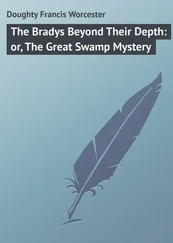Francis Douce - The Dance of Death
Здесь есть возможность читать онлайн «Francis Douce - The Dance of Death» — ознакомительный отрывок электронной книги совершенно бесплатно, а после прочтения отрывка купить полную версию. В некоторых случаях можно слушать аудио, скачать через торрент в формате fb2 и присутствует краткое содержание. Жанр: foreign_antique, foreign_prose, на английском языке. Описание произведения, (предисловие) а так же отзывы посетителей доступны на портале библиотеки ЛибКат.
- Название:The Dance of Death
- Автор:
- Жанр:
- Год:неизвестен
- ISBN:нет данных
- Рейтинг книги:5 / 5. Голосов: 1
-
Избранное:Добавить в избранное
- Отзывы:
-
Ваша оценка:
- 100
- 1
- 2
- 3
- 4
- 5
The Dance of Death: краткое содержание, описание и аннотация
Предлагаем к чтению аннотацию, описание, краткое содержание или предисловие (зависит от того, что написал сам автор книги «The Dance of Death»). Если вы не нашли необходимую информацию о книге — напишите в комментариях, мы постараемся отыскать её.
The Dance of Death — читать онлайн ознакомительный отрывок
Ниже представлен текст книги, разбитый по страницам. Система сохранения места последней прочитанной страницы, позволяет с удобством читать онлайн бесплатно книгу «The Dance of Death», без необходимости каждый раз заново искать на чём Вы остановились. Поставьте закладку, и сможете в любой момент перейти на страницу, на которой закончили чтение.
Интервал:
Закладка:
Francis Douce
The Dance of Death Exhibited in Elegant Engravings on Wood with a Dissertation on the Several Representations of that Subject but More Particularly on Those Ascribed to Macaber and Hans Holbein
PREFACE
The very ample discussion which the extremely popular subject of the Dance of Death has already undergone might seem to preclude the necessity of attempting to bestow on it any further elucidation; nor would the present Essay have ever made its appearance, but for certain reasons which are necessary to be stated.
The beautiful designs which have been, perhaps too implicitly, regarded as the invention of the justly celebrated painter, Hans Holbein, are chiefly known in this country by the inaccurate etchings of most of them by Wenceslaus Hollar, the copper-plates of which having formerly become the property of Mr. Edwards, of Pall Mall, were published by him, accompanied by a very hasty and imperfect dissertation; which, with fewer faults, and considerable enlargement, is here again submitted to public attention. It is appended to a set of fac-similes of the above-mentioned elegant designs, and which, at a very liberal expense that has been incurred by the proprietor and publisher of this volume, have been executed with consummate skill and fidelity by Messrs. Bonner and Byfield, two of our best artists in the line of wood engraving. They may very justly be regarded as scarcely distinguishable from their fine originals.
The remarks in the course of this Essay on a supposed German poet, under the name of Macaber, and the discussion relating to Holbein’s connection with the Dance of Death, may perhaps be found interesting to the critical reader only; but every admirer of ancient art will not fail to be gratified by an intimate acquaintance with one of its finest specimens in the copy which is here so faithfully exhibited.
In the latest and best edition of some new designs for a Dance of Death, by Salomon Van Rusting, published by John George Meintel at Nuremberg, 1736, 8vo. there is an elaborate preface by him, with a greater portion of verbosity than information. He has placed undue confidence in his predecessor, Paul Christian Hilscher, whose work, printed at Dresden in 1705, had probably misled the truly learned Fabricius in what he has said concerning Macaber in his valuable work, the “Bibliotheca mediæ et infimæ ætatis.” Meintel confesses his inability to point out the origin or the inventor of the subject. The last and completest work on the Dance, or Dances of Death, is that of the ingenious M. Peignot, so well and deservedly known by his numerous and useful books on bibliography. To this gentleman the present Essay has been occasionally indebted. He will, probably, at some future opportunity, remove the whimsical misnomer in his engraving of Death and the Ideot.
The usual title, “The Dance of Death,” which accompanies most of the printed works, is not altogether appropriate. It may indeed belong to the old Macaber painting and other similar works where Death is represented in a sort of dancing and grotesque attitude in the act of leading a single character; but where the subject consists of several figures, yet still with occasional exception, they are rather to be regarded as elegant emblems of human mortality in the premature intrusion of an unwelcome and inexorable visitor.
It must not be supposed that the republication of this singular work is intended to excite the lugubrious sensations of sanctified devotees, or of terrified sinners; for, awful and impressive as must ever be the contemplation of our mortality in the mind of the philosopher and practiser of true religion, the mere sight of a skeleton cannot, as to them, excite any alarming sensation whatever. It is chiefly addressed to the ardent admirers of ancient art and pictorial invention; but nevertheless with a hope that it may excite a portion of that general attention to the labours of past ages, which reflects so much credit on the times in which we live.
The widely scattered materials relating to the subject of the Dance of Death, and the difficulty of reconciling much discordant information, must apologize for a few repetitions in the course of this Essay, the regular progress of which has been too often interrupted by the manner in which matter of importance is so obscurely and defectively recorded; instances of which are, the omission of the name of the painter in the otherwise important dedication to the first edition of the engravings on wood of the Dance of Death that was published at Lyons; the uncertainty as to locality in some complimentary lines to Holbein by his friend Borbonius, and the want of more particulars in the account by Nieuhoff of Holbein’s painting at Whitehall.
The designs for the Dance of Death, published at Lyons in 1538, and hitherto regarded as the invention of Holbein, are, in the course of this Dissertation, referred to under the appellation of the Lyons wood-cuts ; and with respect to the term Macaber , which has been so mistakenly used as the name of a real author, it has been nevertheless preserved on the same principle that the word Gothic has been so generally adopted for the purpose of designating the pointed style of architecture in the middle ages.
F. D.
CHAPTER I
Personification of Death, and other modes of representing it among the Ancients. – Same subject during the Middle Ages. – Erroneous notions respecting Death. – Monumental absurdities. – Allegorical pageant of the Dance of Death represented in early times by living persons in churches and cemeteries. – Some of these dances described. – Not unknown to the Ancients. – Introduction of the infernal, or dance of Macaber.
The manner in which the poets and artists of antiquity have symbolized or personified Death, has excited considerable discussion; and the various opinions of Lessing, Herder, Klotz, and other controversialists have only tended to demonstrate that the ancients adopted many different modes to accomplish this purpose. Some writers have maintained that they exclusively represented Death as a mere skeleton; whilst others have contended that this figure, so frequently to be found upon gems and sepulchral monuments, was never intended to personify the extinction of human life, but only as a simple and abstract representation. They insist that the ancients adopted a more elegant and allegorical method for this purpose; that they represented human mortality by various symbols of destruction, as birds devouring lizards and serpents, or pecking fruits and flowers; by goats browsing on vines; cocks fighting, or even by a Medusa’s or Gorgon’s head. The Romans seem to have adopted Homer’s 1 1 Iliad, and after him Virgil, Æn. vi. 278.
definition of Death as the eldest brother of Sleep; and, accordingly, on several of their monumental and other sculptures we find two winged genii as the representatives of the above personages, and sometimes a genius bearing a sepulchral vase on his shoulder, and with a torch reversed in one of his hands. It is very well known that the ancients often symbolized the human soul by the figure of a butterfly, an idea that is extremely obvious and appropriate, as well as elegant. In a very interesting sepulchral monument, engraved in p. 7 of Spon’s Miscellanea Eruditæ Antiquitatis, a prostrate corpse is seen, and over it a butterfly that has just escaped from the mouth of the deceased, or as Homer expresses it, “from the teeth’s inclosure.” 2 2 Iliad IX. On an ancient gem likewise in Ficoroni’s Gemmæ Antiquæ Litteratæ, Tab. viii. No. 1, a human scull typifies mortality, and a butterfly immortality.
The above excellent antiquary has added the following very curious sepulchral inscription that was found in Spain, HÆREDIBVS MEIS MANDO ETIAM CINERE VTMEO VOLITET EBRIVS PAPILIO OSSA IPSA TEGANT MEA, &c. Rejecting this heathen symbol altogether, the painters and engravers of the middle ages have substituted a small human figure escaping from the mouths of dying persons, as it were, breathing out their souls.
Интервал:
Закладка:
Похожие книги на «The Dance of Death»
Представляем Вашему вниманию похожие книги на «The Dance of Death» списком для выбора. Мы отобрали схожую по названию и смыслу литературу в надежде предоставить читателям больше вариантов отыскать новые, интересные, ещё непрочитанные произведения.
Обсуждение, отзывы о книге «The Dance of Death» и просто собственные мнения читателей. Оставьте ваши комментарии, напишите, что Вы думаете о произведении, его смысле или главных героях. Укажите что конкретно понравилось, а что нет, и почему Вы так считаете.
